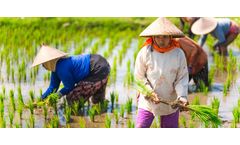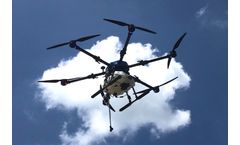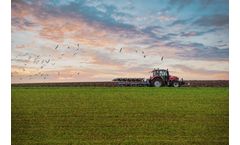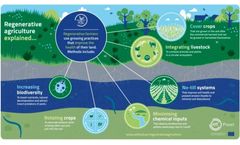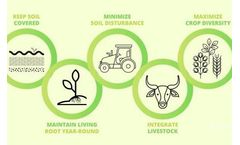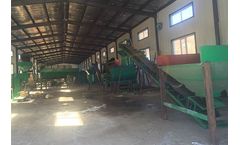Refine by
Arable Land Articles & Analysis
25 articles found
Water is undoubtedly one of the most important resources on the planet. However, we often forget its central role in an activity we all depend on: agriculture. Despite 70% of available freshwater being dedicated to this sector, climate change, growing demand, and poor management have jeopardized the availability of this resource, directly affecting global food security. Agriculture cannot exist ...
With the global population soaring and arable land shrinking, the need for smart farming solutions has never been more critical. ...
In the past few decades, agricultural land has been largely lost, and increased salinity in soils around the world has received much attention. Nowadays, nearly 8% of the world's arable land can no longer be used for crop cultivation due to salt pollution, and more than half of the world's countries are affected. ...
The sector currently faces some challenges, including a shortage of human ability, increased costs for inputs such as water and fertilizer, and a loss of arable land to urban development. Indeed, the overuse of chemical liquids like pesticides can lead to agricultural losses, cost production, and workforce health conditions. ...
For example, on every farm at least 3% of arable land will be dedicated to biodiversity and non-productive elements. ...
It is becoming increasingly difficult to spread manure in many countries due to new regulations and a shortened spreading season. The Smits family in the Netherlands was looking for a way to spread digestate more efficiently. We came up with a great solution for this; by pumping manure underground over long distances. This saves time and money and has less impact on the ...
This is crucial, giving the fact that agriculture is a major driver of biodiversity loss, conversion of forests to arable lands and the sharp rise in the atmospheric concentration of nitrous oxide. ...
The term “regenerative agriculture” is gaining prominence in climate-related conversations. It dates back to the 1980s when Robert Rodale coined the term, “regenerative organic agriculture” as way to express that organic should be more than simply avoiding chemical inputs. The term has been defined and re-defined by many different authors, sometimes describing very ...
Managing Production Risk Through Crop Insurance Facilitator: Devinn Lambert, Bioenergy Technologies Office, DOE kicked off this Session Spotlight on algae farming of the Algae Biomass Summit. Devinn works in the Advanced Algal Systems Program and is Co-Chair on the inter-agency working group on algae. This is one of the driving forces how Devinn and the Algae Biomass Organization have come ...
The problems of excessive use of fertilizers, inefficient, and arable land quality have decreased year by year. As the main goal, carry out the industrialization of new and efficient biological fertilizers. ...
Our world's population is growing more rapidly than ever before, causing strain on our ability to produce enough food for everyone, partially because of the increase in the number of people and partially because of the related loss of arable land from the same factor. At the same time, the push for a healthier diet has improved the outlook for aquaculture ...
ByBESTMIX
Shallow (<1 m deep) snowpacks on agricultural areas are an important hydrological component in many countries, which determines how much meltwater is potentially available for overland flow, causing soil erosion and flooding at the end of winter. Therefore, it is important to understand the development of shallow snowpacks in a spatially distributed manner. This study combined field ...
The analysis of the farmers' perceptions of ANPS pollution as well as the factors affecting their perceptions can provide valuable information for relevant policy-making to preserve high quality water in Poyang Lake and regional quality of arable land. Through a survey titled ‘Farmers' perceptions of ANPS pollution and farming behaviors in the Poyang Lake ...
Food is about agriculture; agriculture is about land and water; and land and water are about property — who owns it, who has access to it, and who cultivates it. ...
ByEnsia
The Milton farming enterprise extends to 790 hectares of predominantly arable land, which is used for growing potatoes and cereals, with further grassland supporting Beef Suckler Cows and sheep. ...
First, the regions of the world that have experienced the highest rates of productivity are exactly where agricultural land is being lost at the highest rate. According to the United States Department of Agriculture’s research services, more than 2000 acres of existing or potential farmland are being lost every day in North America and Western Europe due to development. ...
In the Pacific Ocean are Chile's several island possessions, including Easter Island, the Juan Fernández islands, and the Diego Ramírez islands. Chile´s total land area is 743,800 km2, of which 21.2% is agricultural land (157,687 km2) and 21.8% is forest (162,148 km2). The majority of agricultural land is covered by natural ...
It requires farmers to sign a 15-year contract to put land in the Reserve Program. There have been about 6 to 7 million acres whose contract term ended in the past two years. ...
Now imported grain accounts for nearly 60 percent of regional grain consumption. With water scarce, arable land limited, and production stagnating, grain imports are likely to continue rising. ...
While the total grain area is down from the peak of 732 million hectares in 1981, largely from the retiring of marginal and eroded land, production is more than 50 percent higher thanks to improved yields. ...

